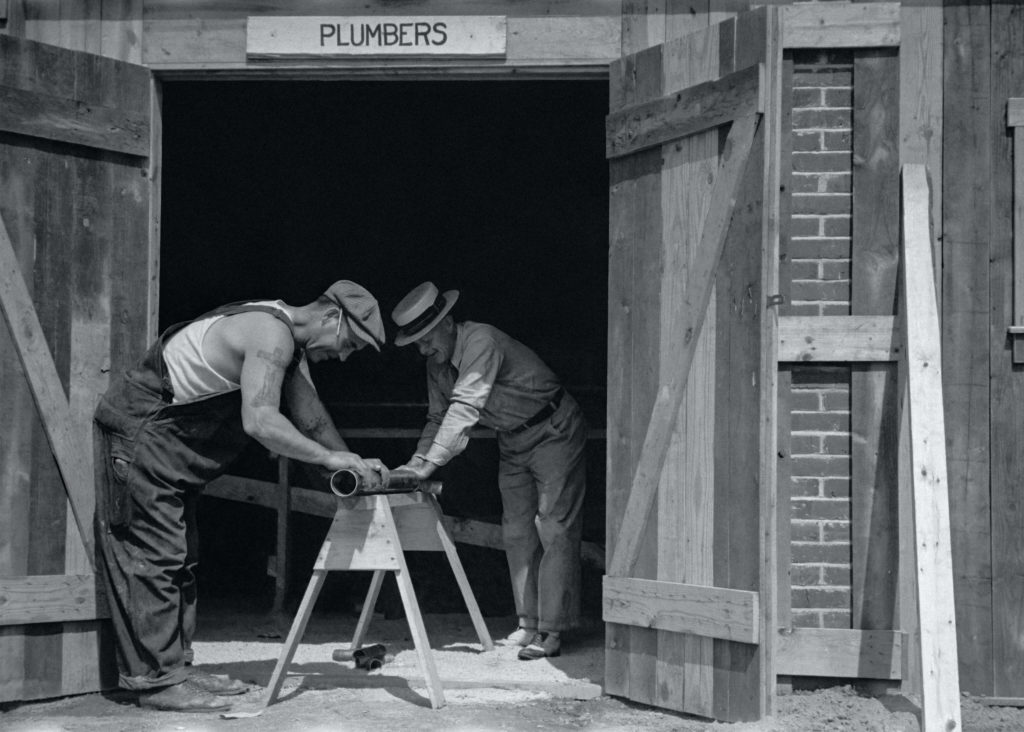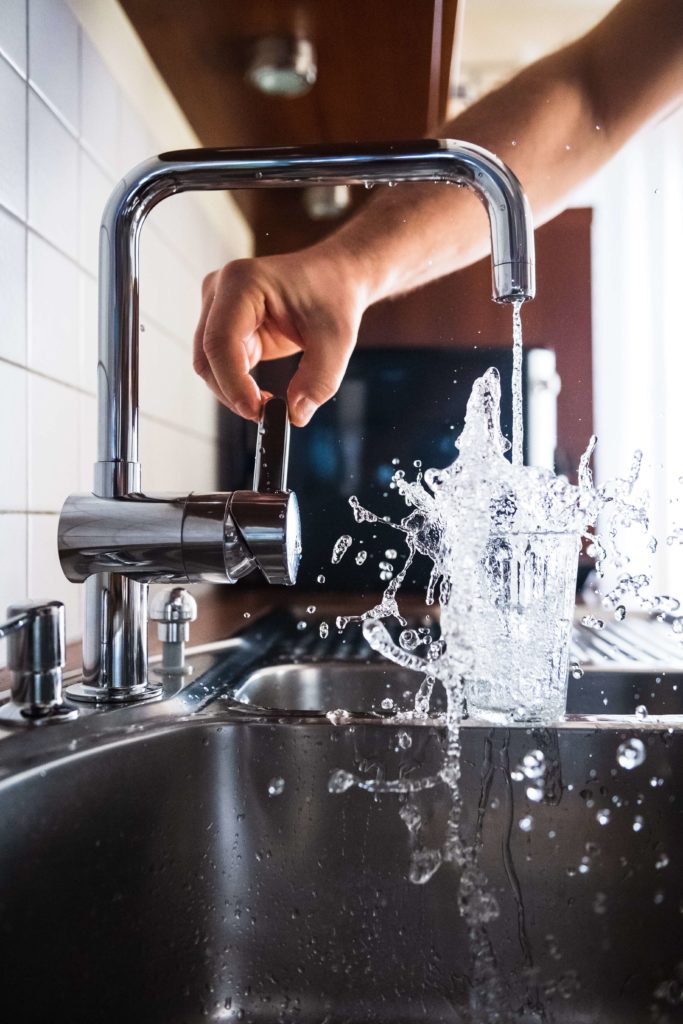5 Common Strategies that work for all Plumber SEO

Plumbers and plumbing companies are service providers that can benefit massively from plumber SEO.
Plumbing can be a super competitive business. Simply having a website doesn’t cut it anymore – you need a plumber specific SEO strategy to help you get in front of your customers.
As with any effective SEO approach, there are certain factors about the plumbing industry that must be considered when structuring your plan.
You’ve got to look at all aspects of your business, identifying potential areas for growth in the digital space. As a plumber, you’ll know that your business is defined by:
· Location – you service customers based on areas you work with, and where they need plumbing done (home, office, etc).
· Services – you provide services to your customers that they need.
How well you can meet these requirements defines the success of your business, and this will be no different when it comes to your SEO strategy.
SEO for plumbers requires a strong focus on both location and services – as this will be what your customers are searching for online. Your SEO strategy should reflect this.
Focusing on these two parameters will help you build a plumber SEO strategy that works, and actually delivers results.
Our Top 5 SEO Tips for Plumbers:
#1: Optimise ‘Near Me’ Searches
As a business that runs by locality, locally optimised SEO is going to be your most important tool.
The use of ‘near me’ searches have grown exponentially in the last few years, and are likely to only continue to grow. Therefore, if you’re a plumber that doesn’t utilise this feature, it’s likely you’ll lose customers to businesses that do.
You should be using local keywords in your plumber SEO strategy – this is an absolute necessity. Location worded searches will help you target customers who are looking for your services and are ready to engage with your business.
Other local SEO features that will be important for plumbers include:
· Google Maps. Make sure your business is easily findable on Google Maps, as well as being verified as a plumbing business location.
· Google My Business. This is a feature Google provides which you must use to ‘verify’ your business with them.
· Customer reviews. These are essential to representing your brand as a reputable business. Make sure online reviews are visible on your website, Facebook, Google and anywhere else that might be relevant.
· Social Presence. Social media might not top the list of priorities for plumbers, however it’s still a good idea to have some kind of social presence – a Facebook page, at the very least. This shows browsing customers that you are a legitimate, up to date business.

#2: Website Design For Plumbers
Your website design represents your brand online – your entire business as a plumber. In today’s digital world, this has never been more true.
Neglecting your website design could make your plumber business suffer as a result. If you don’t have a well designed, customer friendly website that holds up to your competitor’s sites, which plumbing business do you think potential customers are likely to choose?
The aesthetics of your site are only the beginning. The first step is making sure your brand is well represented; however you’ve also got to consider your website’s design in terms of implementing your plumber SEO strategy.
Aspects you should focus on improving include:
· Loading speed. Make sure you minimise your site loading speed as much as possible. At the very least, you should begin with compressing all images and files on your site.
· User friendliness. Is your website design easy for plumbing customers to navigate? Can they quickly find what they are looking for? A website that isn’t designed well will turn new customers off – you only have a few seconds to grab their attention.

Screen responsive. Is your site suitable for mobile browsers? More than half the Internet is now surfed via mobile – don’t lose half your customers with a glitchy site. Your website design should respond automatically to any screen size your plumbing customers could be browsing on.
Your website is your chance to make a lasting impression on customers; it’s also your tool for implementing SEO. An excellent SEO strategy won’t have the same effect if your website design is not equally fantastic.
Your website design represents you and should sell you as the best plumber out there, so make it count!
#3: Maximise Your Content Pages
Your site content should be used to:
· Help customers learn about your business and services
· Enable customers to easily find what they need
· Optimise your site for SEO with plumber specific keywords
Each page of content should be aimed toward maximising all three of these goals.
Providing informative content about your plumbing services to site viewers doesn’t have to mean neglecting your SEO, and vice versa.
You should be utilising all the following forms of content pages:
Service Pages
Remember that each page on your website is an opportunity to rank highly for certain keyword phrases.
Service pages provide an excellent opportunity for targeting customers looking for literally any service you might provide.
Using Google Keyword planner, search for commonly searched phrases surrounding every type of service you offer.
From there, choose primary keywords for each service page – generally, these should be your most popular services that customers are most in need of.
It’s also a good idea to target relevant secondary and tertiary keywords in each page, which could be less popular services that customers still look for.
Other Pages (Homepage, About Us, Contact, etc)
Don’t neglect the other pages of your site. Your keyword strategy should be used effectively in all areas possible. This includes your:
Homepage: This is your landing page, so this should be where you use your strongest primary keyword. E.g. ‘Auckland Plumber,’ ‘Plumbing company Auckland,’ etc.
About Us: Use strong hitting, secondary keywords here. Not your strongest keyword – this should be reserved for your landing page – but a phrase that might come second or third as the highest relevant search term.
Contact: Maximise your contact page by using a relevant keyword that contact ready customers are searching for – and keep it locally worded. E.g. ‘Auckland plumber contact,’ ‘contact plumber Auckland now,’ etc.
This will send customers to your page who are directly looking for a plumber to contact in your area. Make sure your contact details are easy to find for fast browsers.

#4: Segregate Your Plumber SEO By Area
We’ve already identified that local SEO is super important for plumbers. This will be one of the key steps towards bringing the right kind of customers to you.
Area specific pages are where you make the most out of your local SEO keyword research.
As a plumber, you know location is everything for your business; you know best the areas you service and it’s essential that you target customers within these areas.
Keyword planning will show you the top search results for each area and service, and your area specific pages will be where you utilise these.
Devote a page to each area you work with, using your keyword research to select the most relevant / strong hitting keyword for each area.
Each page will need original content (at least 500 – 1000 words). It’s important that you don’t duplicate content; as Google can recognise this and will punish your site.
#5: Use Regular Blogging
Blogs should be used not only as interest points for your customers, but also for wider audiences.
These will serve a few very important purposes for your plumber SEO, including:
· Building your reputation as a reputable business in the industry
If you provide informative, helpful and interesting content about things related to your plumbing industry, you’ll be able to target outside audiences that could read your blog for plumbing advice, helpful tips, or to learn more about the industry.
You’ll also show browsing customers that you know your stuff when it comes to plumbing.
· Increasing site traffic
Well-written blogs that people actually enjoy reading are recognised by Google, and highly rewarded.
Blogs are your opportunity to keep your site traffic coming in and hopefully increasing.
- Get your website Ranked No.1 on Google with KWD SEO Auckland
Attracting a larger, more varied audience will help your rankings massively with Google.
· Link building
You should also make sure to use links wisely here – always link to at least two reputable outside sources, and at least two internal links (pages on your own site).
Creating an intelligent network of links shows Google that you are a resourceful, informative and connected website – a site worthy of higher rankings.
It also is your opportunity to connect yourself with powerful outside sites that Google already likes and rates highly enough for top rankings.
· Staying up to date
Publishing regular blogs will show Google that the content on your site is fresh, updated and relevant. It also shows search engines your site is not stagnating, but staying active and connected.

More Info on SEO For Plumbers – Got Your Strategy Sorted?
We always advise customers to try not to be overwhelmed taking in all the above information. The way to approach your plumber SEO is by maximising the above steps as much as possible. When executed well and combined effectively, these efforts will be rewarded by Google and other search engines with higher online rankings – which is definitely something you need as a business in 2021.
It can seem daunting at first, but simply takes time, research, planning, and of course, execution. Your plumber SEO strategy should also be regularly monitored and updated, in order to continue seeing results.
-
Get your website Ranked No.1 on Google with KWD SEO Auckland
Not all plumbers have the time or resources to devote to a full breadth SEO strategy like this – but it’s one that works time and time again. If you’re time poor, leave it to the professionals – and we’ll leave the plumbing to you. Check out our specialised plumber SEO and website design services here.
You May Also Like
- 5 Defensible Reasons Why Speed Optimisation is Top Ranking Factor
- How to Protect Your Website from Negative SEO AU
- XML Sitemap | Why its Important for Best SEO Performances


Comments are closed.